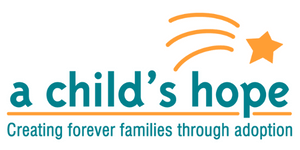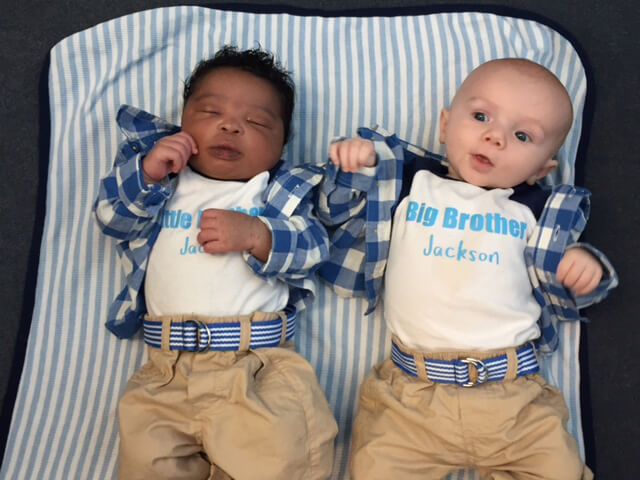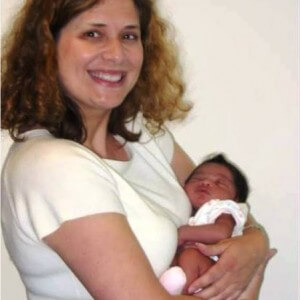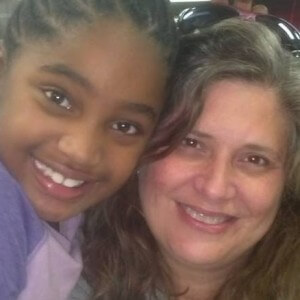Parker Herring, is a Board-Certified Family Law Attorney and Director of the NC-based adoption agency, A Child’s Hope. In this blog, she discusses the most frequent asked questions about adoption that she gets from birth mothers. Plus, shares many of her firsthand experiences as she’s adopted two children of her own.
 One of the questions about adoption I often hear from birth mothers is:
One of the questions about adoption I often hear from birth mothers is:
“How can I let my child know how much I love him/her?”
I explain that although she will not be there physically to do the daily tasks that let a child know he/she is loved, there is a lot that can be done before and after the placement to help the child understand the difficult act of choosing adoption. Remember, a child can never have too many people loving him/her. These eight ideas are written as suggestions for birth mothers, but of course, birth fathers can follow the same protocol.
Letters — Write a letter to your child for the adoptive parents to read later. What is most important is that this letter be in your own words and from your heart. Explain why you made this decision, how much you love him/her and how he/she will always be in your heart. My middle son’s birth mother wrote a nicely worded letter on lined paper with a pen. It’s simple and beautiful.
Lifebooks — Consider doing a photo book. Known as a lifebook, these scrapbooks can include photographs of you, your family, and even the birth father. Over time the child can get to know you. For some ideas on photo books, Amazon has a nice selection.
Make Something for the Child — Making a blanket or giving a stuffed animal to the adoptive family to give to the child is special. The child can keep it, it’s tangible and something you have gifted. If you are okay with parting with a stuffed animal or toy that you had as a child, this can make the gift even more meaningful.
Books About Adoption — Purchase a children’s book about adoption and inscribe inside a message from your heart. Maybe something like: “Never forget how much I love you!” For a list of children’s books, visit amazon and your local library.
Send Clothes and Toys. Ask the adoptive parents to let you know about sizes for clothes and favorite toys to send to your child. Even something small, but sent on a regular basis honoring an important day or event, will let the child know that they continued to be loved.
Naming the Child — If you are in contact with the adoptive parents, ask them to work with you on choosing a name for the child that either has part of your name, or a name you chose for the baby. Ask the adoptive parents to share with the child how he/she got their name. Names are a sensitive subject. If you are uncomfortable bringing up the suggestion of being involved in the name process, consider asking a counselor for help. If you don’t have a counselor, email or ask the question in a note to the adoptive parents. My oldest son’s birth mother chose a name for him, but never told us. I didn’t know until after the mother’s birth certificate arrived. I’ve told him the name she chose, and he cherishes it. If I’d known of her choice, I would have honored it by using at least one of the names.
Stay in touch. Both with open and semi-open adoptions (hot link to web pages), you can send letters and pictures over the years. Birthday cards, Valentine’s cards, all holidays. Send in advance so the child receives on his/her holiday celebration. Your pictures can show the child how you are doing. I saw one birth mother hold up a sign in a photograph with the lettering “Forever in my Heart”. You can also set up SnapFish, Shutterfly or Flickr accounts to share pictures.
Visits – It is important to always follow through with plans to stay in touch. If you had agreed on visits, follow through. At the visit remember that your emotions may be difficult for the child to understand, so do your best to put the child’s needs first. It’s always good to give a small gift – whether it be a card, coloring book or some other small token. Physically demonstrate your affection for the child at the visit, but take cues from the child. You do not want to make the child feel uncomfortable. If there has been a long time between visits, it may take your child awhile to warm up. Don’t insist that the child call you “mom” – use your first name.
There are many ways show the child that you love and care for him/her as they grow. Determining which will be best for you, the child and the adoptive family is a partnership and should be planned for, as much as possible, before the adoption. Holding open and honest conversations with the adoption agency counselor and the adoptive parents will go a long way in providing you comfort that the child knows how loved they are, as well as providing the child the knowledge of who the birth parents are, where they come from and, most importantly, that they are loved dearly.
A mother of three children, E. Parker Herring has a deep respect and understanding of family law and the adoption process (for which she’s adopted two children of her own). She is the founder and director of A Child’s Hope, a North Carolina licensed adoption agency located in Raleigh that focuses on helping birth mothers and families looking to adopt and answer questions about adoption. A Child’s Hope has placed 332 children since 2000, and is the only North Carolina domestic adoption agency directed by an attorney. Herring is a Board-Certified Family Law Specialist who has practiced family law for nearly 30 years in the Raleigh area. She’s a member of the NC Bar Association, the Wake County Bar Association, and the NC Collaborative Lawyers.




 Deanna always knew she wanted to be a mom, but a physical condition made it unlikely that she could safely become pregnant and give birth. By the time she was married and ready to start a family, several relatives offered to become surrogates, but Deanna had researched adoption and knew it was the best option for her and her husband, Ben.
Deanna always knew she wanted to be a mom, but a physical condition made it unlikely that she could safely become pregnant and give birth. By the time she was married and ready to start a family, several relatives offered to become surrogates, but Deanna had researched adoption and knew it was the best option for her and her husband, Ben. Tracy was nearly 40-years-old, and had always wanted a family. Unfortunately, she had not met Mr. Right, and wondered if having a husband or a child would be in her future. She began to think about adoption, but was concerned about taking it on as a single mom. However the more she began to consider it, the more she knew in her heart that this was the right answer.
Tracy was nearly 40-years-old, and had always wanted a family. Unfortunately, she had not met Mr. Right, and wondered if having a husband or a child would be in her future. She began to think about adoption, but was concerned about taking it on as a single mom. However the more she began to consider it, the more she knew in her heart that this was the right answer. The second trimester of pregnancy often feels like the best. You may no longer get morning sickness, and you may now enjoy a hearty appetite along with a resurgence of energy. You also are starting to see visible changes in your body as the baby grows, but you don’t yet have some of the late stage discomforts.
The second trimester of pregnancy often feels like the best. You may no longer get morning sickness, and you may now enjoy a hearty appetite along with a resurgence of energy. You also are starting to see visible changes in your body as the baby grows, but you don’t yet have some of the late stage discomforts.